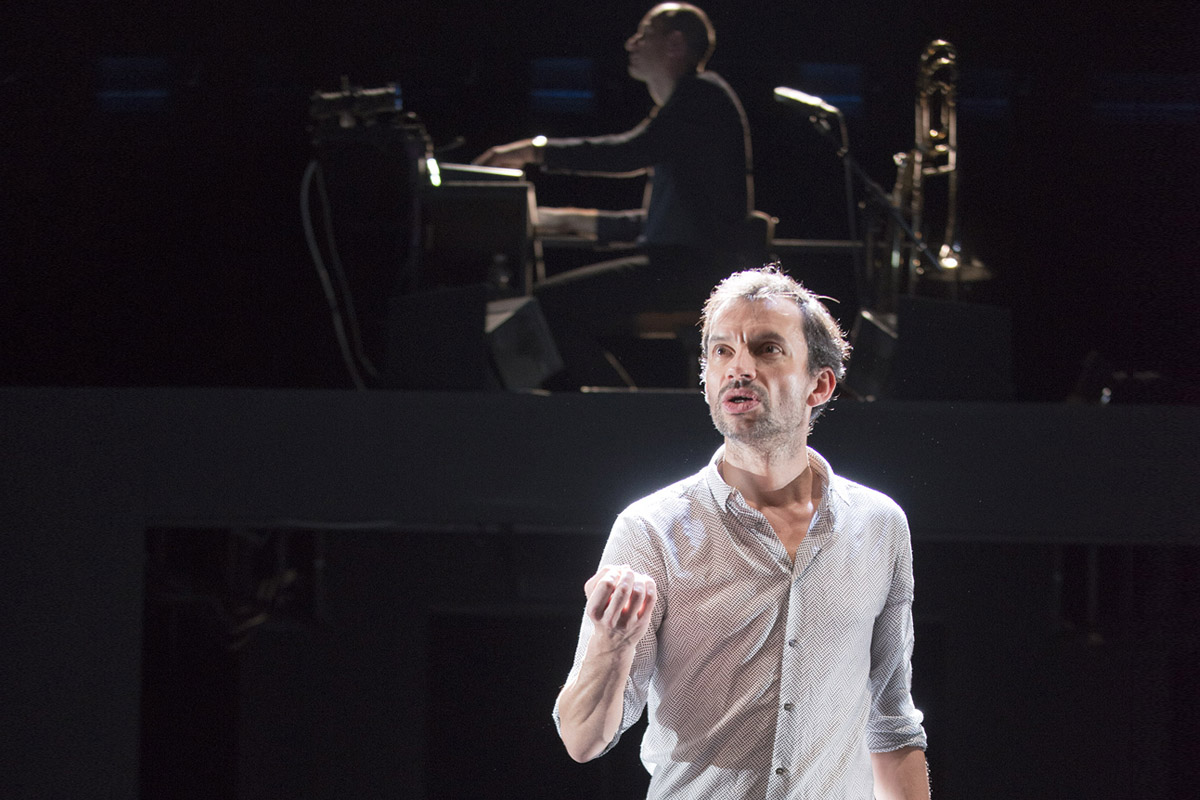Repairing the Living follows in twenty-four hours the journey of the heart of Simon, a young man of 19 years, in a state of brain death, transplanted into the body of Claire, a woman of 51 years, suffering from myocarditis.
The novel, published by Maylis de Kerangal in 2014, is a bestseller. Sold hundreds of thousands of copies, it is adored by critics, rewarded with a dozen literary prizes, adapted twice for the theater (by Emmanuel Noblet then by Sylvain Maurice) and once for the cinema (by Katell Quillévéré). This notable interest can be explained by the controversy that agitated France at that time: a bill making organ donation "automatic", which would complement that of "presumed consent" applied – theoretically – since 1976. Theoretically, because in practice, the number of oppositions still amounts to 30% and the number of registered in the national register of refusals has increased considerably since 2014. In a precise and medically documented text, the author invites the reader to reflect on the subject, immersing him in a breathless story dotted with colorful characters.
This stage version, created in 2015, is signed by Sylvain Maurice, director and director of the Centre Dramatique National de Sartrouville – one of those places on the outskirts of Paris that wants to be the emblem of "cultural democratization". With, to date, about thirty stagings, he questions in his creations the relationship between artistic disciplines. This year, he created Ma Cuisine, a show combining object theatre, video, music and cooking recipes. For Repairing the Living, he surrounded himself with the actor Vincent Dissez (associate artist at the Théâtre National de Strasbourg), with whom he had already worked in 2009 on Shakespeare's Richard III ; and musician and composer Joachim Latarjet (also director and founder of the company Oh! Yes).

The story is, above all, that of a race against time, a countdown of twenty-four hours during which every second contains a vital stake: Maylis de Kerangal adopts a style punctuated by long sentences, juxtapositions and enumerations. To reflect the urgency and speed of this narrative, Sylvain Maurice makes many cuts. He chooses to highlight the chronology, the linearity of the story, and ignores the author's flashbacks or digressions. The work is focused on rhythm, that of speech – sometimes frantic, sometimes posed – but also that of music, omnipresent. The main themes that make up the dramaturgy of the work (life, death, mourning), are preserved, even accentuated by this scenic transposition: the stage makes possible the units of time and action that punctuate the fable.
It highlights recurring themes of the novel, such as that of the "beautiful death": a notion inherited from the Greeks that a heroic death (in battle, in the prime of life) is more "beautiful" than a slow death, old age or disease. This "ars moriendi" (art of dying well) is found, among other things, in the importance given to the restoration of the body, which the family is afraid of finding "shredded" after organ harvesting. The other essential theme is that of "reparation" in question. The title is a quote from Anton Chekhov's Platonov , when Voinitzev asks Triletzsky: "What are we going to do, Nicolai? " and that he replied "Bury the dead and repair the living". This notion of "repair", which evokes mechanics and inanimate material more than humans, refers to a certainly ethical dimension: what is right, what is it allowed to do to allow the living to continue to exist? Is it a question of "generosity" to donate organs, as the nurse-coordinator asks the parents of the deceased? Is it an individual choice or, on the contrary, a collective choice (family, societal)?
These questions, Sylvain Maurice gives them substance through an actor, alone, who came to tell the story in the manner of an aede: this artist who, in ancient Greece, sang epics accompanied by a musical instrument. It is no longer a question of embodying the characters but of suggesting them, evoking them by meticulous details of posture and diction. All thus become links in the same chain, in the same race, of which Vincent Dissez is the polyphonic narrator. To the units of action and time is also added that of place, since the show takes place on a single space: a treadmill, surrounded by a device bearing in the shape of an arch. Within this monumental machine, the actor moves on the ground, unbalanced on the treadmill, while the musician is placed above, overlooking the stage. This scenography (designed by Eric Soyer, Joël Pommerat's usual collaborator), symbolic rather than realistic, allows a multiplicity of interpretations: we can see a mausoleum, or a triumphal arch in tribute to Simon's "heroism", or a materialization of urgency by the treadmill, or even a door to an afterlife. The verticality gives the show a transcendent dimension, accentuated by the cold white light that dazzles the spectator. On stage, actor and musician are always present, breaks are few. The show is as technical as the text. Since Vincent Dissez and Joachim Latarjet do not see each other, they can only work by listening to each other. They play together, blind. The music does not only have an illustrative role, it constitutes a parallel narrative, it tells its own story with its own language and participates, in its own way, in the tension and nervousness of the show.
It is, in short, a performance that brings together three virtuosos: Sylvain Maurice for the staging, Vincent Dissez for the interpretation and Joachim Latarjet for the music. Virtuosos, because you have to excel in your art to succeed in this performance worthy of a trio of balancing acts, of breathtaking accuracy and precision.
Without detracting from the quality of the show, it is nevertheless possible to question the success of this work. What does this "race to adapt" tell us about the society in which we live? Is it really "democratized" theater to offer two shows, addressing the same text, one in the sphere of subsidized theater, the other oscillating between the Off d'Avignon and the national stages of the territories? Wouldn't this triple adaptation rather tell us, implicitly, the standardization of themes (and with it, that of ways of thinking) that art and the performing arts know? If the envelope of subsidies is tightened for young artists, it seems abundant enough to finance through the same channels two adaptations of the same novel, one year apart. In one of his notes of intent, Sylvain Maurice writes that "Maylis de Kerangal's text describes what humanity could be: people who help each other to live.But what Humanity are we talking about? Of the entire species, or only of the elites? It's up to everyone to judge.
The show is to be discovered on tour on November 6 at the Théâtre de l' Agora (national stage of Évry and Essonne), then from November 21 to December 1 at the National Theater of Strasbourg and finally on December 5 at the Agora (Boulazac).






































